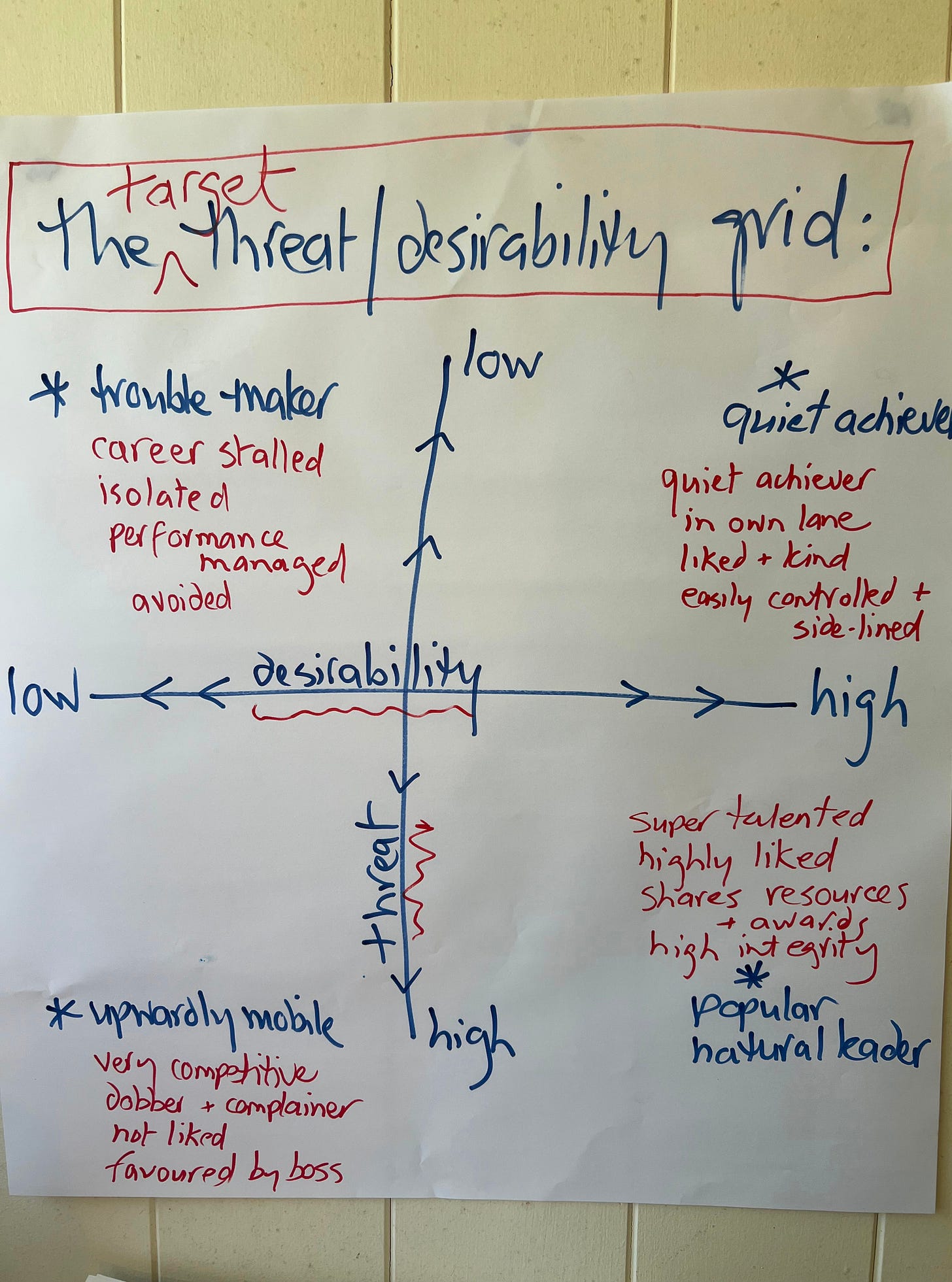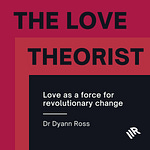This podcast shines some light onto the troubling issue of workplace violence which can take many forms, and for our purpose today, I call bullying. The continuing harm caused by workplace bullying suggests it is a complex phenomenon that is multi-causal, involves multiple actors and targets, can be direct or indirect and not recognised as occurring or proactively addressed in trauma organised and trauma causing workplaces. I outline my early theorising about bullying by identifying the two key factors of desirability and threat. These factors exist on a continuum from high to low levels that intersect and create a grid whereby we can map the kinds of characteristics that workers who might get bullied have in each grid. [See the map map below]. The grid quadrant occupied by the classic target of bullies is described and alongside that the 3 other grid quadrants identify other potential targets.
While the Grid describes workers’ behaviours and characteristics it is important to note that the issue of bullying is about power and abuse of power by the person who is acting in bullying ways or failing to stop it occurring. The Grid does not show the characteristics and behaviours of people who bully as it deserves its own attention. At the same time I would suggest that a focus on individuals’ behaviours can belie how authoritarian management and toxic workplace cultures are not only about individuals. The Target Threat/Desirability Grid is best considered a partial explanation of the reasons why bullying happens. In short, the Claras, Veras, Cathys and Sams of the workplace are not the reasons why bullying happens. But to the extent that their experiences holds a mirror to the causes, the Grid has some value.
A draft mud map of the Grid:
Do let me know what you think.
I explore the issue of workplace violence on TikTok and Instagram and expand on it and the need for a love ethic informed approach in my book - Broken-heartedness: Towards love in professional practice published by Revolutionaries.







Share this post